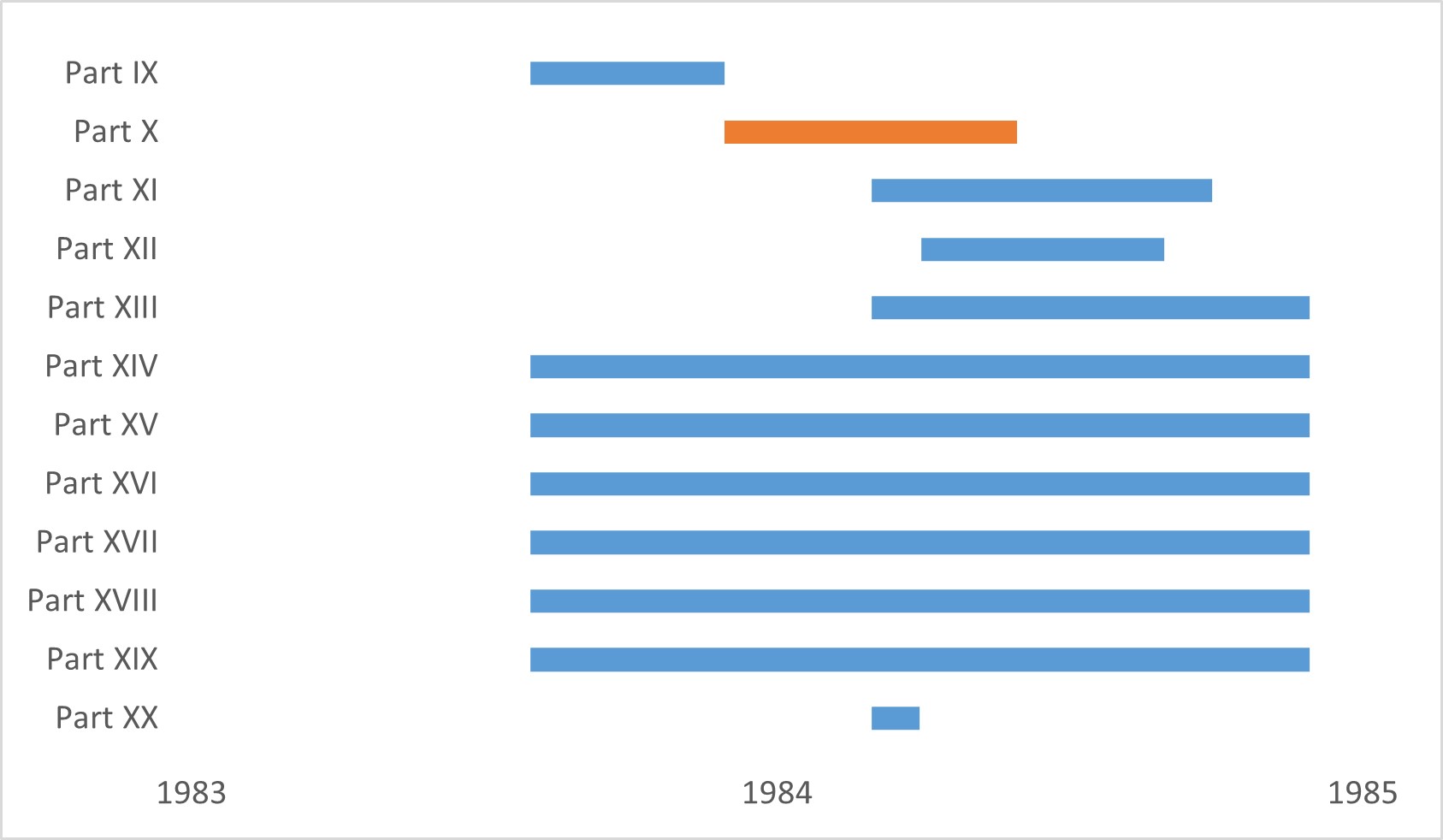This post continues my history of WFRP1, which started here.
WFB1 received very little support in games magazines, including White Dwarf. At this stage Citadel and Games Workshop were separate companies with separate interests. Citadel was based in Nottingham, managed by Bryan Ansell and focused on miniatures. Games Workshop was in London, led by Steve Jackson and Ian Livingstone and primarily interested in RPGs. White Dwarf was a Games Workshop publication and its contents reflected its owner’s interests. It was a role-playing magazine and had little interest in Citadel’s new game.
There was a small amount of material published in White Dwarf. Rick Priestley wrote an article on giants in WD48 (December 1983), and Richard Halliwell wrote one with role-playing rules for thieves (see part XX) in WD51 (March 1984). There were also a couple of scenarios (‘Thistlewood’ in WD45, September 1983, and ‘Minas Tirith’ in WD53, May 1984), but neither was written by the Citadel team. Warhammer articles in White Dwarf were the exception, not the rule.
In the absence of support from established magazines Citadel published the Citadel Compendium.

The first Citadel Compendium appeared around November 1983. It is a black-and-white A4 magazine with 48 pages. Presentation is similar to WFB1. Text was produced on a Xerox typewriter, with drawings and Letraset headings added. Just as Citadel had little access to the pages of White Dwarf, it also had no access to GW’s professional typesetting.
It is primarily a miniatures catalogue, but also includes a collection of articles, mostly relating to Warhammer. There are errata and rules clarifications; expanded rules for personal characteristics; additional creatures (unicorns, pegasi, vampires and revised spectres); rules for animosity among goblinoids; and rules for science fiction weapons (a foretaste of WH40K). However, the articles of greatest significance in Warhammer‘s development are ‘The Legend of Kremlo the Slann’ and ‘The Mark of Chaos’. The former introduces Lustria and the slann, and the latter contains Warhammer‘s first table of Chaos attributes.
‘The Legend of Kremlo the Slann’
(Download as PDF)
‘The Mark of Chaos’
(Download as PDF)
The Compendium also contains two significant advertisements, which announced a pair of forthcoming supplements: Forces of Fantasy and Realm of Chaos.
The time of the first Citadel Compendium was something of a watershed for early Warhammer. By November 1983 Citadel had produced a dozen flyers and half a dozen articles for the game, and the Warhammer world was beginning to take shape. But this incarnation of the Warhammer world would not be seen again. Over the next year the setting would be heavily revised. Although many of its themes would survive, few of its details would. Very quickly places like Chrystol, Horvenghaast and the Empire of the Four Nations would disappear and be replaced by material that would prove to be more persistent.
The next post looks at Forces of Fantasy.
CHRONOLOGY
The following chart summarises the chronology of this post relative to others in this section of ‘The WFRP Story’.

Title art by Christos Achilleos. Used without permission. No challenge intended to the rights holders.













